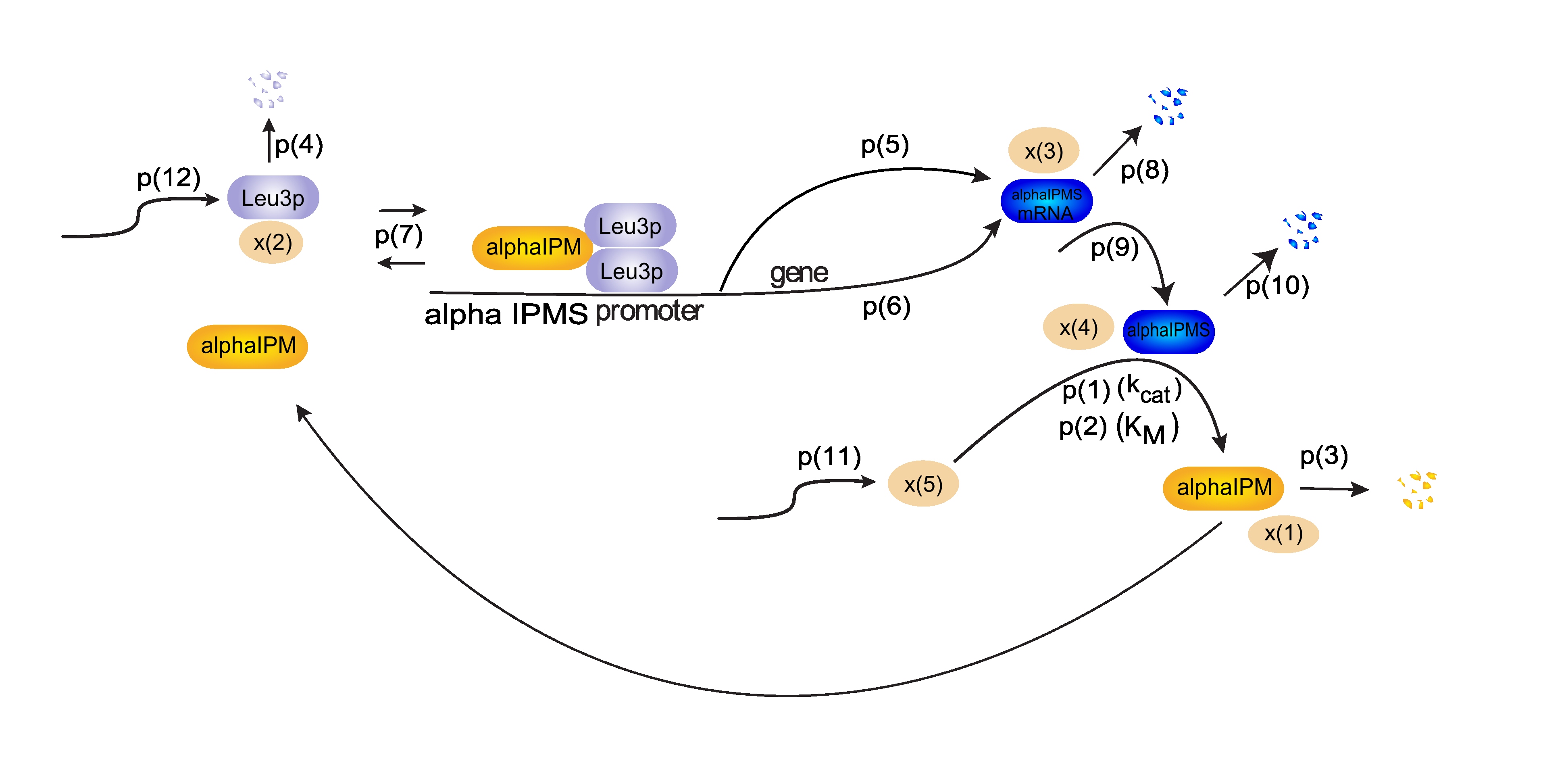Team:Wageningen UR/Project/ModelingProj2
From 2011.igem.org
(→Modeling: Fungal Track 'n Trace) |
(→Modeling: Fungal Track 'n Trace) |
||
| Line 28: | Line 28: | ||
{{:Team:Wageningen_UR/Templates/Style | text= __NOTOC__ | {{:Team:Wageningen_UR/Templates/Style | text= __NOTOC__ | ||
| - | [[File:Spee_FTnT_Model-1_WUR.jpg| | + | [[File:Spee_FTnT_Model-1_WUR.jpg|450px|center]] |
The Leu3p (x(2)) dimer blocks transcription from the alpha-IPM synthase (alpha IPMS) promoter. Alpha-IPM (x(1)) binding to this dimer releases it from the promoter and enhances the transcription rate. p(5) and p(6) model both constitutive expression and the transcription rate increase upon alpha-IPM binding. From alpha-IPMS mRNA (x(3)) the protein is formed, modelled by p(9). Alpha-IPMS (x(4)) enzymatically produces alpha-IPM, which is then incorporated in the beginning of this loop again. Intercellular transport of alpha-IPM creates a signal transduction through a hyphe. | The Leu3p (x(2)) dimer blocks transcription from the alpha-IPM synthase (alpha IPMS) promoter. Alpha-IPM (x(1)) binding to this dimer releases it from the promoter and enhances the transcription rate. p(5) and p(6) model both constitutive expression and the transcription rate increase upon alpha-IPM binding. From alpha-IPMS mRNA (x(3)) the protein is formed, modelled by p(9). Alpha-IPMS (x(4)) enzymatically produces alpha-IPM, which is then incorporated in the beginning of this loop again. Intercellular transport of alpha-IPM creates a signal transduction through a hyphe. | ||
Revision as of 18:43, 13 September 2011
 "
"



